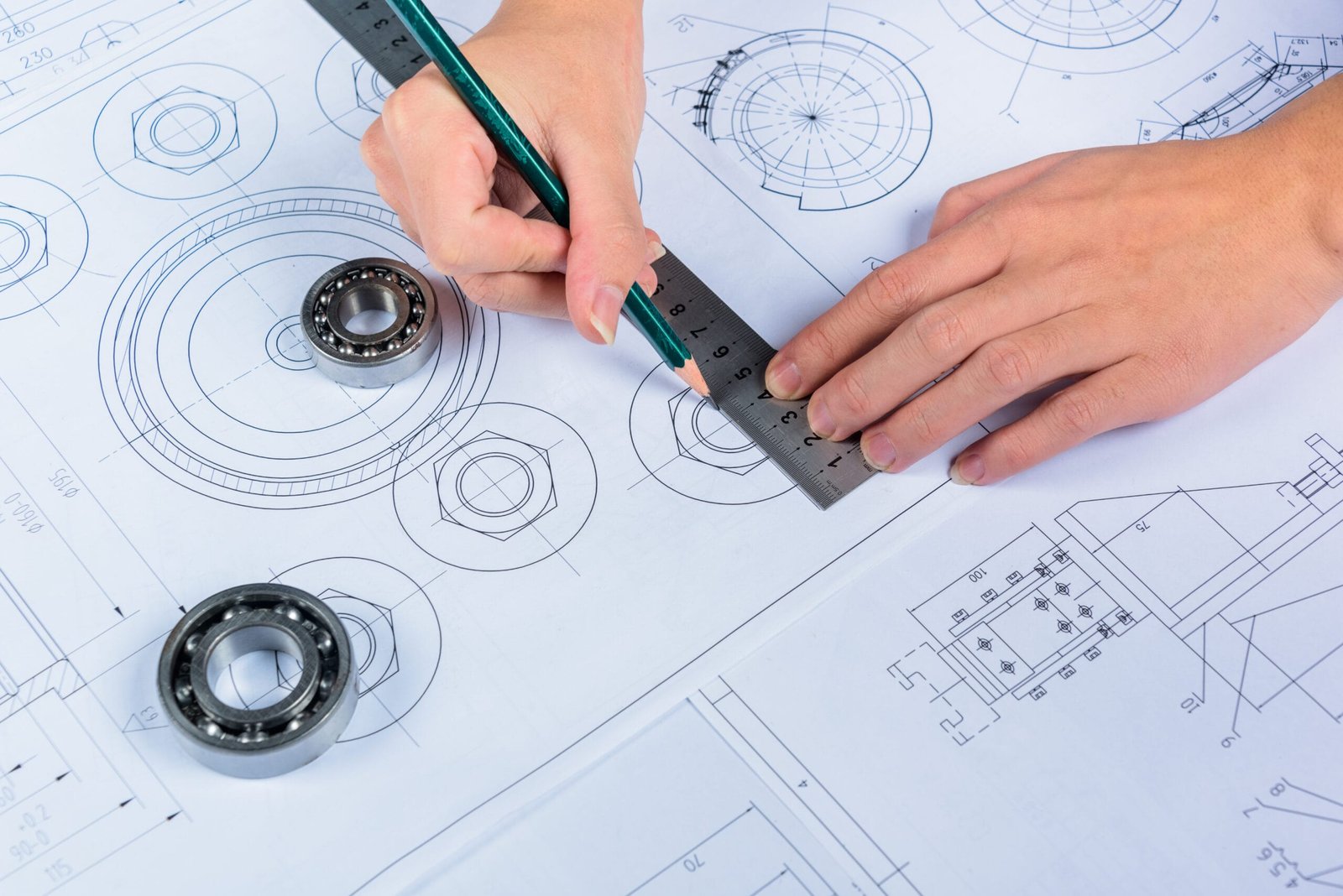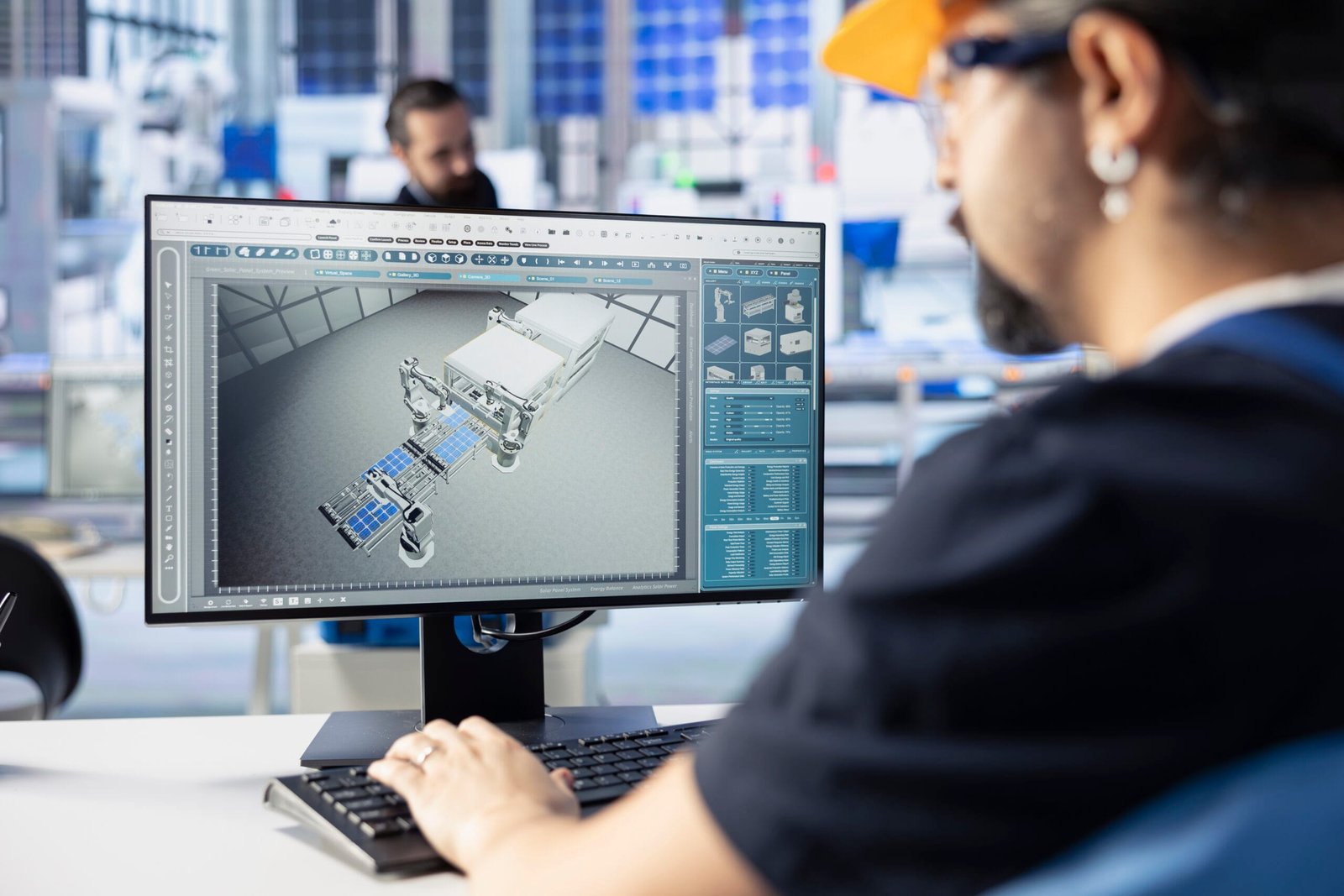Description:
Discover how rendering for part catalogs transforms the way DesignHok showcases mechanical components. Learn about its benefits, techniques, and impact on design communication and client engagement.
In today’s competitive engineering and design world, visual communication plays a crucial role in capturing client attention and ensuring clarity of technical data. At DesignHok, we specialize in transforming mechanical ideas into tangible, understandable, and visually appealing designs. One of the powerful services we offer is rendering for part catalogs, which not only enhances the visual representation of parts but also aids in sales, marketing, technical documentation, and manufacturing support.
This blog explores how rendering for part catalogs works, its benefits, the tools involved, and why it is an essential offering from DesignHok to modern manufacturers, engineers, and product designers.
What Is Rendering for Part Catalogs?
Rendering for part catalogs involves creating photorealistic or stylized images of mechanical parts using 3D modeling and rendering software. These visual representations are often included in product catalogs, technical brochures, manuals, and online databases to offer a clear and compelling view of individual components.
Unlike raw CAD models or technical drawings, rendered images provide a visually rich and digestible way to present a part’s appearance, texture, material finish, and even its interaction with light—all of which contribute to an improved understanding of the product.
Why Rendering Matters in Mechanical Part Catalogs
While technical drawings and 3D models communicate dimensions and geometry, rendered images communicate real-world appearance. Here’s why this matters:
- Enhanced Client Understanding: Clients or end-users without engineering backgrounds can easily understand what a part looks like.
- Marketing Appeal: High-quality rendered visuals are ideal for marketing campaigns, websites, and printed catalogs.
- Streamlined Manufacturing: Rendered images help suppliers and manufacturers quickly identify the parts, reducing chances of error.
- Professional Presentation: A polished catalog with consistent, high-resolution images boosts your brand’s credibility and professionalism.
DesignHok’s Approach to Part Rendering
At DesignHok, we go beyond basic rendering. We combine technical accuracy with artistic realism, ensuring that each rendered part is not just visually attractive but also dimensionally and materially correct.
Here’s how our process works:
1. Importing CAD Files
Clients provide us with 2D drawings or 3D CAD models (from software like SolidWorks, AutoCAD, or Inventor). We carefully analyze the model to understand its structure, details, and intended function.
2. Material and Texture Mapping
We assign realistic materials to each surface—such as stainless steel, aluminum, plastic, or rubber. The textures and finishes (matte, gloss, brushed, etc.) are selected to match real-world properties.
3. Lighting and Environment Setup
Lighting plays a vital role in rendering. We simulate appropriate lighting conditions—studio lighting for catalogs or ambient lighting for real-use scenarios—to highlight each feature of the part effectively.
4. Camera Positioning and Angles
We choose the best angles to showcase the part’s geometry and key features. We may render multiple views such as isometric, front, back, and exploded views, depending on the project’s needs.
5. Final Rendering
Using powerful rendering engines like KeyShot, Blender, or V-Ray, we produce high-resolution images that are ready for use in catalogs, web listings, and promotional material.
6. Post-Processing
We enhance rendered images with post-processing techniques in tools like Photoshop to refine colors, add annotations, and include branding elements where necessary.
Applications of Rendered Part Catalogs
Rendered part catalogs serve multiple industries and use cases:
- Manufacturers: Provide detailed part visuals for use in installation manuals, repair guides, and supplier communication.
- Engineering Companies: Use renderings in technical documentation and client presentations.
- Retailers and Distributors: Display products online with realistic visuals to increase engagement and reduce product returns.
- Marketing Teams: Create eye-catching promotional materials with photorealistic imagery.
Benefits of Using DesignHok’s Rendering Services
✅ Accurate Visual Representation
We ensure each rendering maintains dimensional fidelity while showcasing realistic materials and lighting.
✅ Fast Turnaround
Our team is efficient, delivering high-quality renders on time without compromising on visual quality.
✅ Versatility Across Industries
From automotive and aerospace to industrial machinery and consumer products, we adapt to various design requirements.
✅ Seamless Collaboration
We work closely with your in-house design or marketing team, ensuring the rendered visuals align with your branding and technical expectations.
Tools We Use
At DesignHok, we use cutting-edge software to create world-class renderings:
- SolidWorks & Inventor (for precise CAD modeling)
- KeyShot (for real-time rendering and animation)
- Blender (for advanced rendering effects)
- Photoshop (for post-production and touch-ups)
These tools allow us to maintain both speed and quality, delivering consistent, market-ready visuals.
Future of Rendering in Mechanical Design
As industries move towards more digital, visual, and user-centric communication, the importance of rendering is only going to increase. Augmented reality (AR), interactive 3D catalogs, and virtual product showcases are already on the rise—and rendering is at the core of them all.
At DesignHok, we are already exploring these advancements, preparing to offer interactive renderings where users can rotate, zoom, and even disassemble virtual models in real-time—offering a next-level experience in design catalogs.
Conclusion
Rendering for part catalogs is more than just a visual enhancement—it’s a communication tool that bridges the gap between complex engineering data and user-friendly presentation. At DesignHok, we specialize in creating stunning, detailed, and technically accurate rendered images that transform catalogs into powerful marketing and technical resources.
Whether you’re an OEM, a product designer, or a distributor, our rendering services can give your parts the professional spotlight they deserve. Elevate your catalog presentation today with DesignHok’s rendering solutions.
FAQs: Rendering for Part Catalogs
Q1. What file formats do you accept for rendering projects?
We accept most CAD formats, including .STEP, .IGES, .SLDPRT, .DWG, and .STL files. If you have another format, let us know—we’ll find a way to work with it.
Q2. How long does it take to render a complete part catalog?
The timeline depends on the number of parts and complexity, but we typically deliver within 3–10 business days per catalog batch.
Q3. Can you render exploded views or animations for the parts?
Yes, we offer both exploded view renderings and animated renderings for manuals, training, and presentations.
Q4. What if I don’t have a 3D model, only a 2D drawing?
No problem! We can convert your 2D technical drawings into 3D models and then render them based on your specifications.
Q5. Are the rendered images print-ready?
Absolutely. We provide high-resolution images suitable for both web and print use, based on your required dimensions and format.





